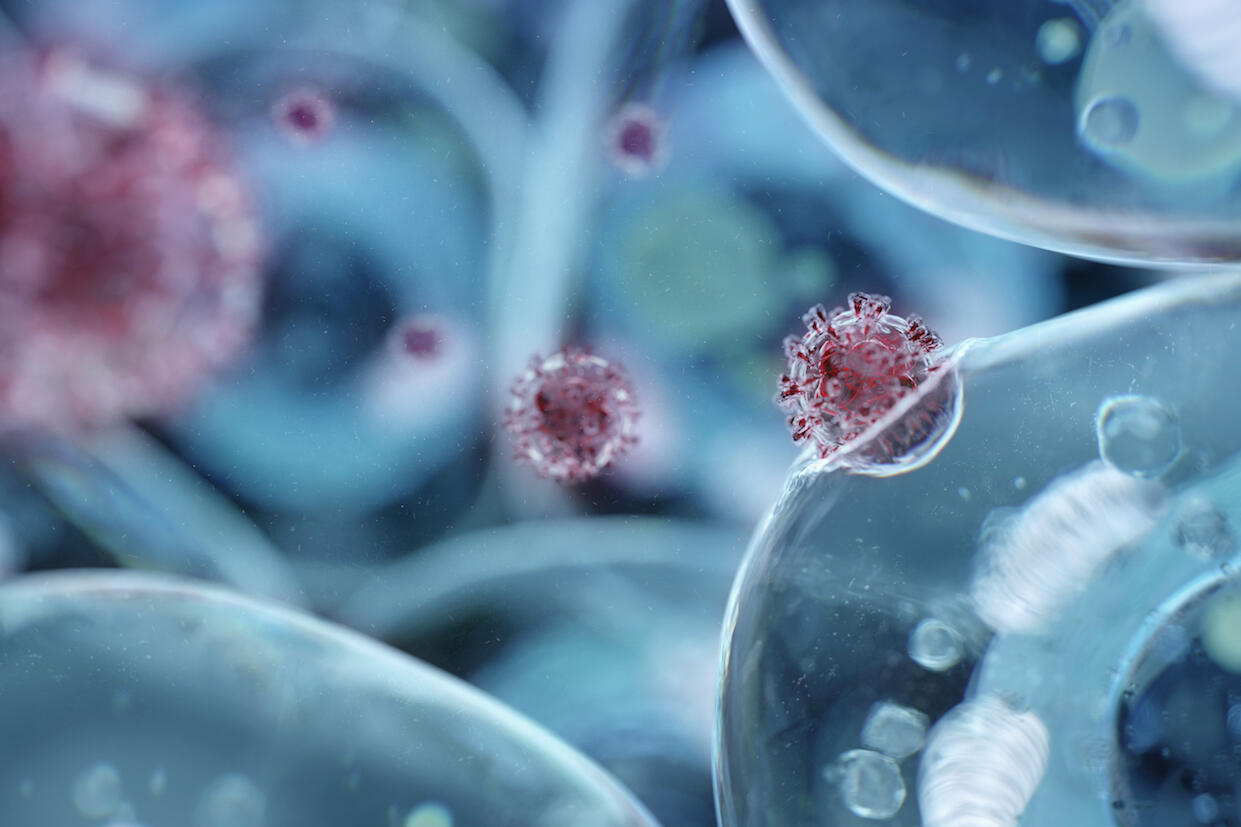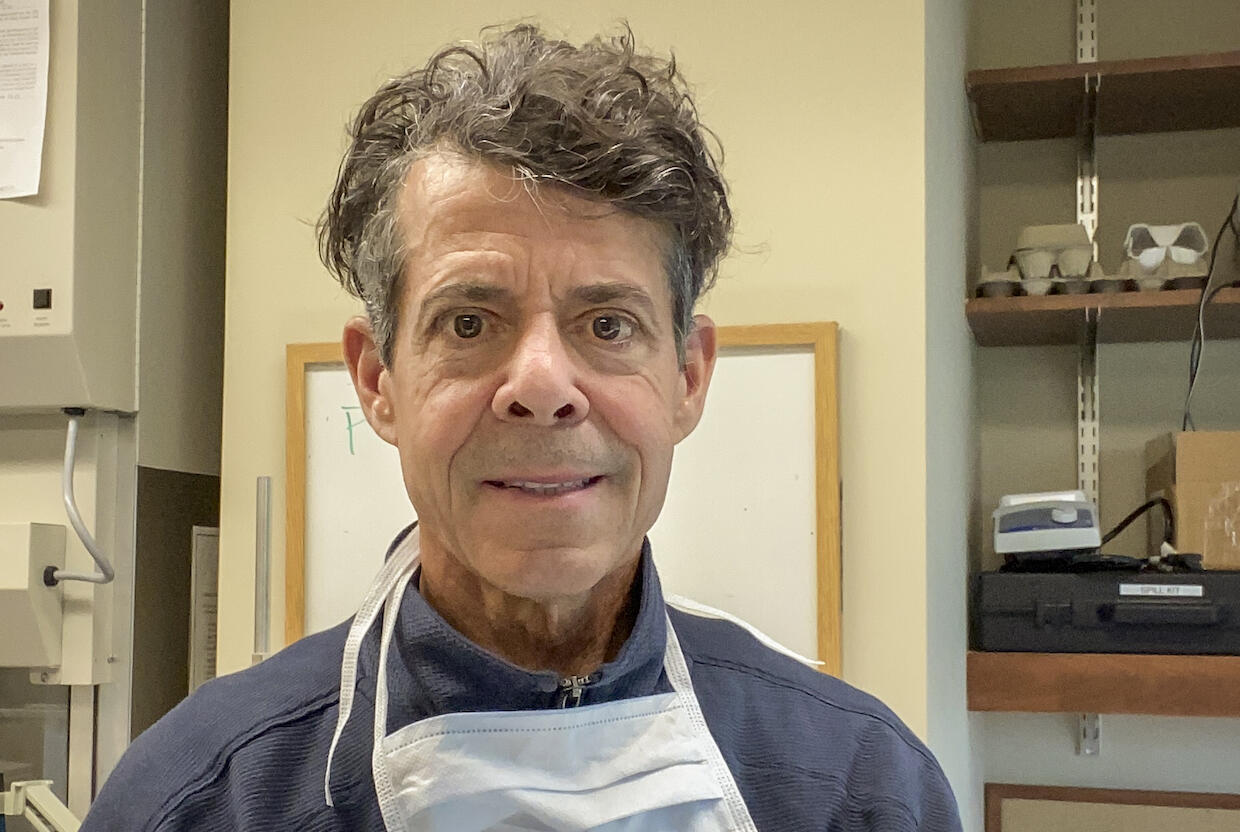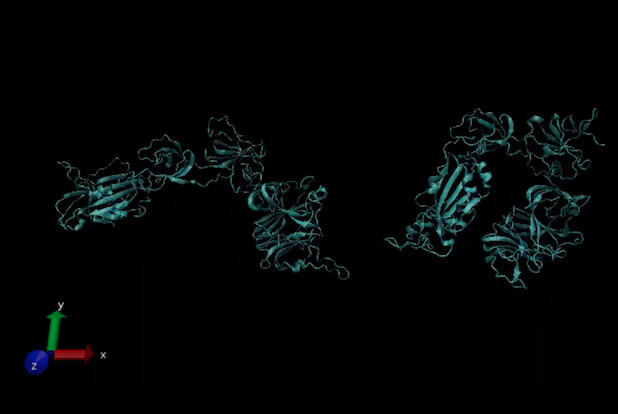
Aug. 18, 2020
VCU researcher developing potential treatment to block COVID-19
Share this story
A Virginia Commonwealth University College of Engineering professor has developed a method that could limit transmission of COVID-19.
The novel coronavirus that causes COVID-19 infects the body by first attaching to specific surface molecules on the outer layer of human cells through a domain of the virus’ “spike” protein, which lets these viruses penetrate host cells and produce infection.
Michael H. Peters, Ph.D., a professor in the Department of Chemical and Life Science Engineering, has developed a small peptide molecule that demonstrates strong and stable attachment to that domain, mimicking the way the virus binds to those surface molecules. If the novel molecule can directly block the initial process of the virus attachment, it could prevent invasion and limit transmission of the virus.

By using powerful supercomputers at NASA’s Ames Research Center in California’s Silicon Valley, Peters and his former graduate student, Oscar Bastidas, Ph.D., now a postdoctoral research fellow at the University of Minnesota’s College of Biological Sciences, have been investigating the mechanistic action of the spike protein.
They are studying the dynamics of how the spike protein changes between active and inactive states. The protein’s receptor binding domain has an “up” position, in which it can bind to cell molecules. But in the “down” position, it appears to be incapable of binding, Peters said.
After mapping the spike protein, they identified a possible molecular “latch” that may be able to restrict one of its important actions and have done preliminary molecular dynamic studies.
“Our initial findings regarding the identification of a molecular latch potentially critical to cellular infection have been further corroborated by our molecular dynamics simulations, which is promising,” Bastidas said.

Peters received an award in May from the COVID-19 Rapid Research Funding Opportunity to test the molecule. The fund, led by the VCU Office of the Vice President for Research and Innovation, with support from the C. Kenneth and Dianne Wright Center for Clinical and Translational Research, awarded nearly $350,000 in funding this spring to 31 VCU research projects that seek to address the impact of the coronavirus.
VCU has entered into a sponsored research agreement with Hoth Therapeutics Inc., a biopharmaceutical company based in New York, for Peters to continue developing and optimizing the possible therapeutic. Hoth, through VCU’s Innovation Gateway, holds an exclusive, long-term license for Peters’ patent for a new molecule.
Subscribe to VCU News
Subscribe to VCU News at newsletter.vcu.edu and receive a selection of stories, videos, photos, news clips and event listings in your inbox.







